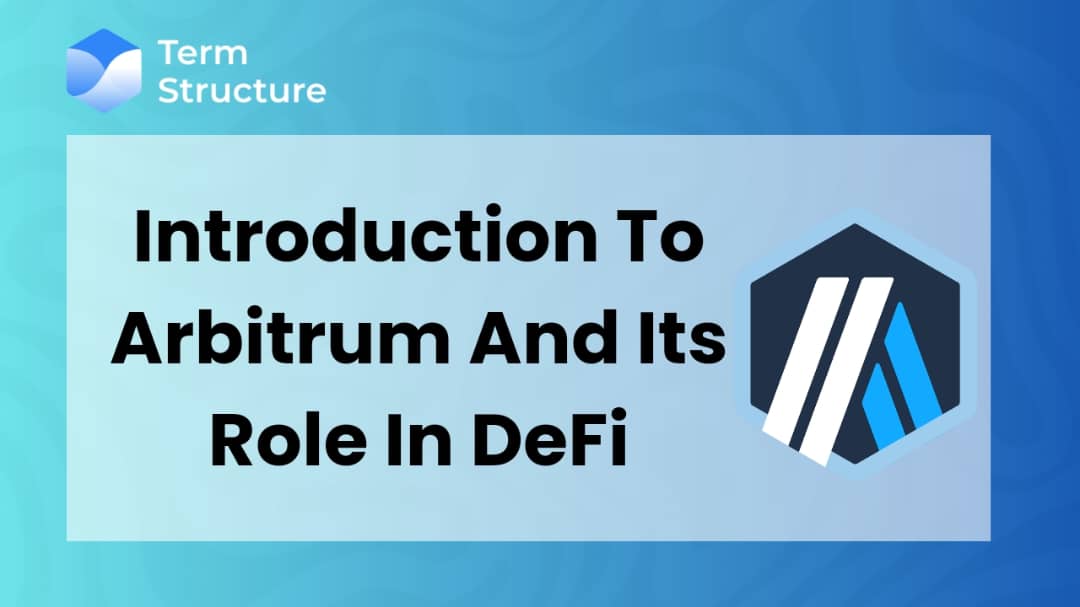Introduction To Arbitrum And Its Role In DeFi

Arbitrum is a Layer 2 scaling solution for Ethereum created by Offchain Labs. It has sought massive attention in the decentralized finance (DeFi) community in the past few months due to the massive reductions it offers to the gas fees while boosting the transaction speeds, with the assurance of keeping the Ethereum decentralized network secure and efficient. Arbitrum employs a system called Optimistic Rollups where multiple transactions are grouped and processed externally before being re-submitted to Ethereum as a single batch. This approach aids in offloading the congestion from the main Ethereum network, making it very suitable for the high computational demands associated with DeFi protocols.
Arbitrum plays an essential role within DeFi and can be described as having various functions. It offers a highly globalized environment where users can engage with decentralized applications (dApps) at a lower cost and shorter time than on Ethereum’s underlying layer. Arbitrum is also built to be compatible with the Ethereum Virtual Machine (EVM), enabling developers to easily integrate and deploy existing Ethereum-based decentralized applications (dApps) with relatively minor code modifications. This compatibility will allow for some projects to directly move to Arbitrum or to be developed natively on Arbitrum which in turn helps increase the utilization of Arbitrum, especially among the new as well as old DeFi protocols.
The network has become a popular preference among many projects that seek to provide users with a better, faster, and cheaper solution compared to Ethereum’s Layer 1 but relies on Layer 1’s security model.
Why Arbitrum? Key Advantages In DeFi.
Scalability And Cost Efficiency:
Low fees are one of the primary advantages of Arbitrum as it aims to be almost 10 times cheaper than Ethereum’s Layer 1. Thus, by bundling transactions, Arbitrum can significantly reduce the gas fees for individual consumers and developers. This is especially important for DeFi, where users can make many transactions and interact with smart contracts within a single session. According to the Arbitrum One documentation, Arbitrum can achieve a possible reduction of up to 95% of the gas fees necessary for Network conditions.
EVM Compatibility:
Arbitrum is EVM-compatible, and this implies that any smart contract, dApp, or tool built on Ethereum can be transferred to Arbitrum with minimal changes. This compatibility with EVM is a significant benefit for developers since they can leverage the available Solidity programming language and tools to deploy solutions on Arbitrum. For existing Ethereum DeFi projects, it has been easy to relocate to Arbitrum, making it easy to see why it has received quick adoptions.
Robust Security:
Arbitrum works on top of Ethereum Layer 1. Unlike some other layer 2 scaling solutions that may sacrifice decentralization or security, Arbitrum’s rollup capability guarantees that any transactions executed in an off-chain layer can be checked and reconciled back to the Ethereum blockchain, maintaining its trustless nature. This makes Arbitrum a safer option compared to other Layer 2 networks or side chains that may have different security assumptions.
Developer and User-Friendly:
Arbitrum has aimed to be as friendly for users and developers as possible. It has abilities like transaction speed enhancements, low latency, and an active support base with numerous resources like documentation and articles. This makes it easier for developers who have not developed solutions using Ethereum scaling solutions before to be able to access them.
Growing Ecosystem:
Arbitrum is an ever-evolving ecosystem, which means that a number of DeFi platforms, NFT marketplaces, and gaming applications increasingly use it. The Arbitrum Portal currently details over 200 projects that are either developed on Arbitrum or have switched from other platforms indicating the diverse adoption from core DeFi utilities such as DEXs and lending to synthetic assets providers and the stablecoin issuers. This network effect enhances the development and use of the platform by even more developers and users.
Interoperability and Future Upgrades:
Arbitrum is not idle; the enhancement team continues working on new upgrades like Arbitrum Nitro, which seeks to deliver even lower fees and higher TPS. In addition, the platform will sustain compatibility with other Layer 2 solutions and blockchains, which will offer more liquidity and versatility to users in the DeFi ecosystem.
Booster DeFi Projects on Arbitrum
This platform offers low fees, excellent scalability, and a high level of security that has drawn several DeFi projects into the network.
GMX:
GMX is a decentralized perpetual exchange, based on the GMX protocol whereby users can trade perpetual futures with low swap fees and zero price impact trades. It is one of the most popular DeFi protocols on Arbitrum, utilizing low fees and fast transactions to provide users with impeccable trading conditions. According to GMX Protocol, the platform has attracted many users as it has many unique features and a friendly interface.
Radiant Capital:
Radiant is a decentralized lending protocol that operates on Arbitrum. It enables users to borrow and lend a variety of crypto assets with lower transaction fees and faster speeds. Radiant capitalizes on Arbitrum's scalability to provide a seamless borrowing and lending experience. Users can lend out their crypto to earn interest or borrow against their assets with ease, without having to worry about high gas fees cutting into their profits. More details are available on Radiant Capital's website.
Treasure DAO:
Treasure is an NFT and gaming ecosystem built on Arbitrum. It has developed a suite of applications and tools that help bring NFT-based games to the Ethereum ecosystem. Treasure's native currency, MAGIC, is used across various games and applications within its ecosystem. The low transaction costs on Arbitrum enhance the user experience, making it easier and cheaper to participate in the ecosystem. Check out Treasure DAO for more information.
Balancer:
Balancer is a popular automated market maker (AMM) and decentralized exchange that has expanded to Arbitrum. Balancer allows liquidity providers to create customizable liquidity pools and earn fees from trades happening within those pools. The deployment on Arbitrum provides users with lower fees and faster transactions, encouraging more liquidity to flow into its pools. You can explore Balancer on Arbitrum by visiting Balancer's platform
Curve Finance:
Curve is a leading decentralized exchange for stablecoins that has also launched on Arbitrum. The platform benefits from the reduced transaction costs and faster speeds of Arbitrum, providing a more cost-effective experience for users who frequently swap stablecoins or engage in liquidity provision. More about Curve on Arbitrum
Future Outlook
The future outlook for Arbitrum in DeFi appears highly promising. Several key developments are anticipated:
1. Expansion of the Ecosystem:
As more DeFi projects migrate to or launch on Arbitrum, the ecosystem is expected to grow. This growth will likely attract more liquidity, users, and developers, further solidifying Arbitrum's position in the DeFi space. The growth of Arbitrum's ecosystem is likely to be fueled by the increasing demand for lower-cost, high-speed transactions and the seamless developer experience that it offers.
2. Continued Technological Innovation:
Arbitrum is actively working on improving its technology with updates like Arbitrum Nitro, which promises even greater scalability and reduced costs. Nitro aims to introduce advanced roll-up technology that can provide even faster transaction speeds and further reduce costs, making Arbitrum an even more attractive option for DeFi applications. Updates on Nitro and other technological advancements can be found on the Offchain Labs Blog
3. Interoperability:
Arbitrum's focus on interoperability will allow it to integrate with other Layer 2 solutions and blockchains, creating a more connected and efficient DeFi ecosystem. Interoperability is key to the future of DeFi as it enables the seamless movement of assets and liquidity between different networks, enhancing user experience and expanding the potential user base.
4. Institutional Adoption:
As DeFi continues to mature, there is potential for more institutional players to participate in the Arbitrum ecosystem. Institutional investors are often concerned with high fees and slow transaction times on Ethereum, and Layer 2 solutions. Arbitrum presents a viable alternative with improvements in security, scalability, and user experience, Arbitrum could see a surge in institutional interest and adoption in the near future.
5. Greater Focus on Decentralization:
As Arbitrum continues to evolve, there is an ongoing effort to increase its decentralization. The team has outlined plans to eventually move towards a fully decentralized network governed by its community.

